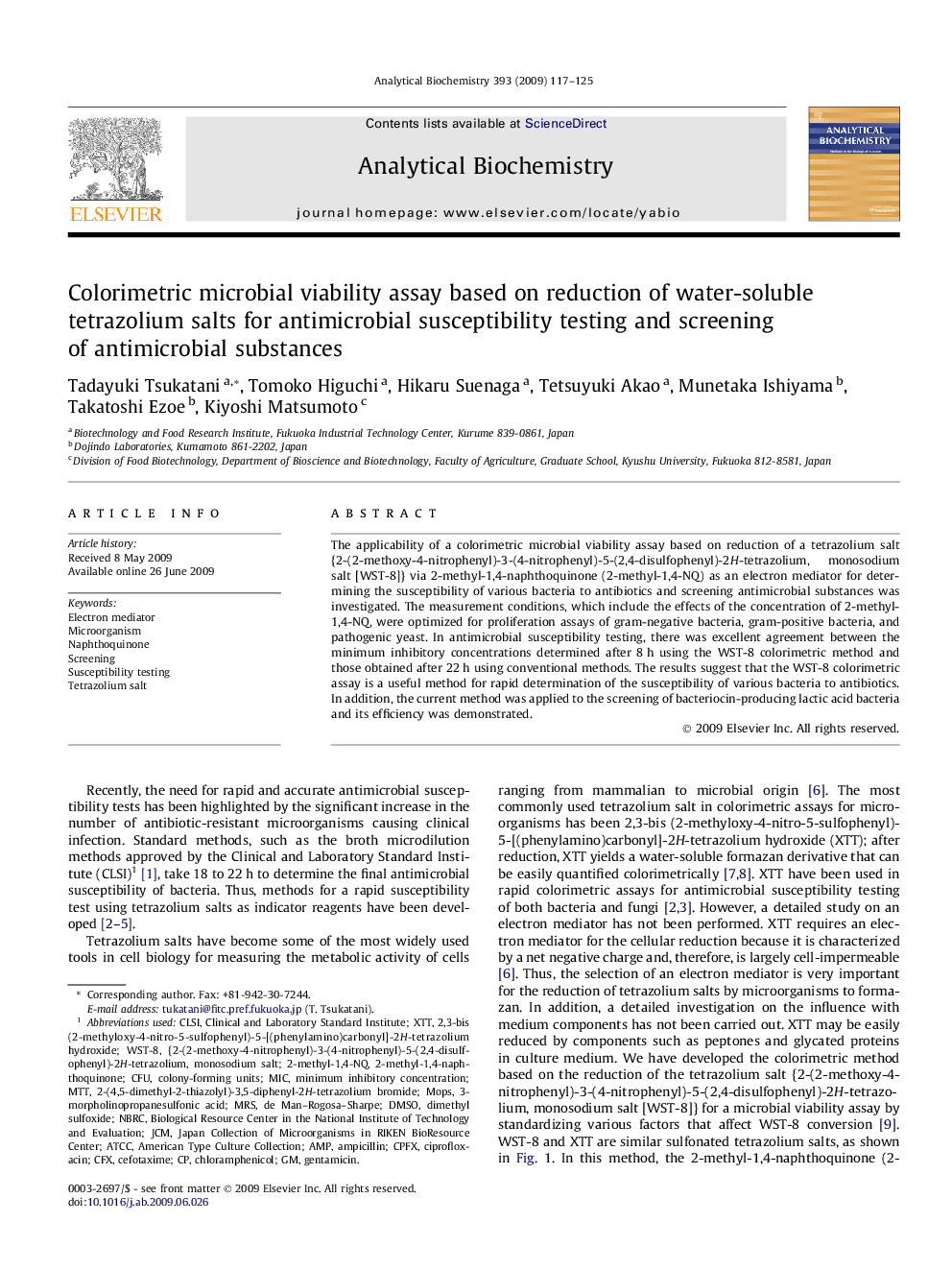| Article ID | Journal | Published Year | Pages | File Type |
|---|---|---|---|---|
| 1175083 | Analytical Biochemistry | 2009 | 9 Pages |
The applicability of a colorimetric microbial viability assay based on reduction of a tetrazolium salt {2-(2-methoxy-4-nitrophenyl)-3-(4-nitrophenyl)-5-(2,4-disulfophenyl)-2H-tetrazolium, monosodium salt [WST-8]} via 2-methyl-1,4-naphthoquinone (2-methyl-1,4-NQ) as an electron mediator for determining the susceptibility of various bacteria to antibiotics and screening antimicrobial substances was investigated. The measurement conditions, which include the effects of the concentration of 2-methyl-1,4-NQ, were optimized for proliferation assays of gram-negative bacteria, gram-positive bacteria, and pathogenic yeast. In antimicrobial susceptibility testing, there was excellent agreement between the minimum inhibitory concentrations determined after 8 h using the WST-8 colorimetric method and those obtained after 22 h using conventional methods. The results suggest that the WST-8 colorimetric assay is a useful method for rapid determination of the susceptibility of various bacteria to antibiotics. In addition, the current method was applied to the screening of bacteriocin-producing lactic acid bacteria and its efficiency was demonstrated.
